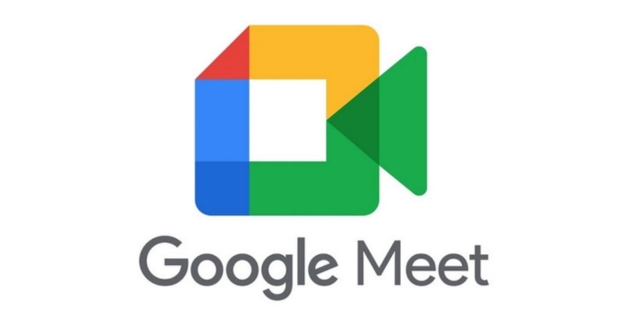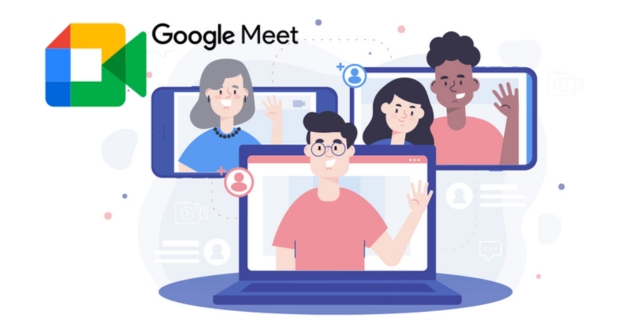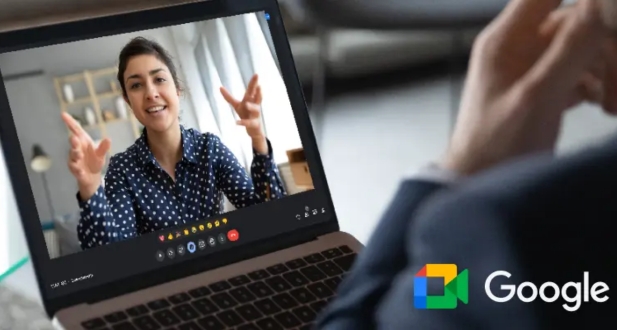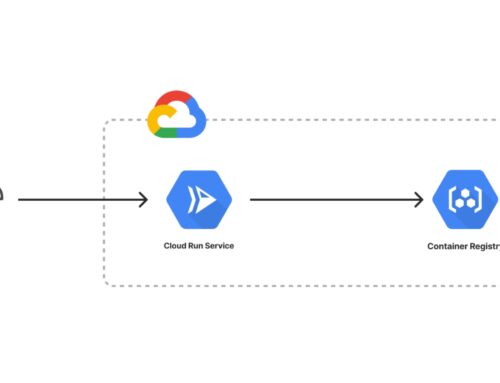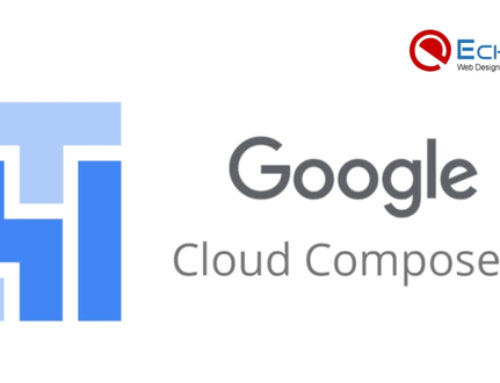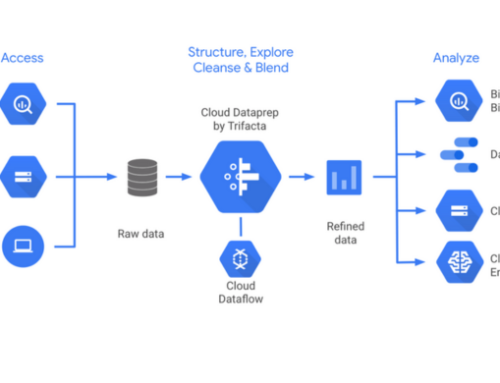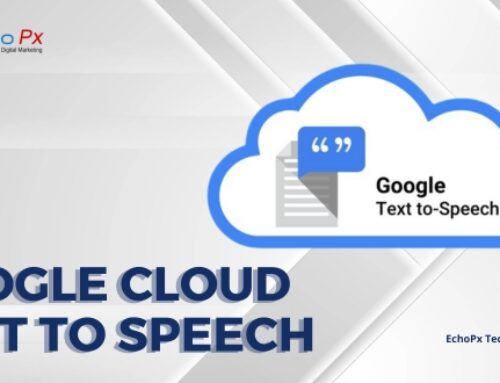Google Meet Introduction
Video conferencing has become an integral part of communication in the modern world, revolutionizing the way people connect and collaborate across distances. This technology has a rich history, evolving from simple teleconferencing systems to sophisticated virtual meeting platforms. Understanding the historical context of video conferencing allows us to appreciate its transformative journey.
Brief history of video conferencing
The roots of video conferencing trace back to the mid-20th century when early experiments with closed-circuit television paved the way for rudimentary video communication. However, it wasn’t until the late 20th century that video-conferencing technologies began to gain momentum. The advent of the internet and improvements in digital communication spurred the development of more accessible and efficient video conferencing solutions. From expensive and cumbersome systems used primarily by businesses and government agencies, video conferencing has evolved into user-friendly platforms accessible to individuals and organizations of all sizes.
The importance of effective communication in the modern world
In the contemporary landscape, effective communication is crucial for success in both personal and professional realms. The globalized nature of business, education, and interpersonal relationships demands instant and seamless communication. Video conferencing facilitates real-time interaction, enabling people to connect face-to-face despite physical distances. This level of immediacy fosters collaboration, understanding, and a sense of connection that traditional communication methods may struggle to achieve. As the world becomes more interconnected, the ability to communicate effectively through video conferencing becomes a valuable skill.
The rise of virtual meetings and the need for reliable solutions
The rise of virtual meetings, driven by factors such as globalization, remote work trends, and the need for efficient communication, has highlighted the importance of reliable video conferencing solutions. Businesses, educational institutions, and individuals rely on these platforms to conduct meetings, classes, and social interactions seamlessly. The demand for user-friendly interfaces, high-quality audio and video, and robust security features has led to continuous advancements in video conferencing technology. The need for reliable solutions is not only practical but also essential for maintaining productivity, collaboration, and a sense of connection in an increasingly digital and dispersed world.
Understanding Video Conferencing
Video conferencing is a communication technology that enables individuals or groups in different locations to hold face-to-face meetings without being physically present. Its primary purpose is to facilitate real-time communication, collaboration, and information exchange among participants who may be geographically dispersed. Video conferencing serves as a valuable tool for businesses, educational institutions, and individuals, allowing them to connect seamlessly, save time, and enhance productivity.
The Evolution of Video Conferencing Technology
The history of video conferencing traces back to the early days of telecommunication, with the first attempts dating back to the mid-20th century. However, it wasn’t until the advent of digital technology and the internet that video conferencing became more practical and widely accessible. Over the years, advancements in video compression, internet bandwidth, and hardware capabilities have contributed to the evolution of video conferencing, making it more reliable, scalable, and user-friendly.
Key Features and Benefits of Video Conferencing
Video conferencing offers a range of features that contribute to its effectiveness. These include real-time video and audio transmission, screen sharing, chat functionality, and virtual backgrounds. The benefits of video conferencing are numerous, such as cost savings on travel expenses, increased collaboration among remote teams, and the ability to connect with individuals globally. It has become an indispensable tool for remote work, virtual education, and fostering connections in an increasingly interconnected world.
Google Meet: An In-Depth Overview
Introduction to Google Meet
Google Meet is a video conferencing platform developed by Google. Initially part of the G Suite, it has evolved into Google Workspace, providing a comprehensive set of productivity tools for businesses and organizations. Google Meet is designed to facilitate virtual meetings, webinars, and collaborative sessions, offering a seamless and user-friendly experience.
Integration with Google Workspace
One of the strengths of Google Meet lies in its integration with Google Workspace, which includes popular applications like Gmail, Google Calendar, and Google Drive. This integration streamlines the scheduling of meetings, allows for easy access to shared documents, and enhances overall productivity by creating a unified digital workspace.
User Interface and Ease of Use
Google Meet boasts a simple and intuitive user interface, making it accessible to users with varying levels of technical proficiency. Participants can join meetings with a single click, and the platform provides features such as automatic captioning and live streaming. The user-friendly design contributes to a positive user experience, reducing barriers to entry for individuals new to video conferencing.
Security and Privacy Considerations
Ensuring the security and privacy of users is a critical aspect of any video conferencing platform. Google Meet employs robust security measures, including encryption of data in transit and in storage. Additionally, features such as meeting access controls, participant authentication, and end-to-end encryption contribute to safeguarding sensitive information. Users can have confidence in the privacy of their discussions and data when utilizing Google Meet for virtual communication.
Key Features of Google Meet
HD video and audio quality:
Google Meet ensures high-definition video and audio quality, providing users with clear and crisp communication. This feature is crucial for effective virtual meetings, as it helps participants feel more engaged and connected, replicating an in-person experience as closely as possible. The platform’s commitment to superior audio-visual performance contributes to a seamless and immersive communication environment.
Real-time collaboration tools:
One of the strengths of Google Meet lies in its real-time collaboration tools. Users can collaborate on documents, spreadsheets, and presentations during meetings. This feature enhances productivity by allowing participants to work together on shared projects in real-time. The ability to collaborate within the meeting itself streamlines workflows, making it easier for teams to achieve their objectives without the need for additional external tools.
Screen sharing and presentation capabilities:
Google Meet facilitates effective communication by offering robust screen-sharing and presentation capabilities. Participants can share their screens to showcase documents, presentations, or any content relevant to the discussion. This feature is invaluable for presentations, training sessions, and collaborative work, enabling a dynamic and interactive virtual environment where participants can engage with shared content seamlessly.
Integration with third-party apps:
Google Meet’s integration with third-party apps enhances its versatility and functionality. Users can seamlessly connect and utilize other tools, such as project management platforms, productivity apps, or file-sharing services, directly within the Google Meet interface. This integration fosters a more comprehensive and streamlined user experience, allowing individuals and teams to leverage their preferred tools without disrupting the flow of the meeting.
Accessibility features:
Ensuring inclusivity, Google Meet incorporates accessibility features to accommodate users with diverse needs. These features may include closed captioning, screen reader compatibility, and keyboard shortcuts, making the platform more accessible to individuals with disabilities. By prioritizing accessibility, Google Meet aims to create an inclusive and user-friendly environment, allowing a broader range of participants to engage in virtual meetings with ease.
Google Meet’s key features encompass a commitment to high-quality audio and video, real-time collaboration tools, seamless screen sharing and presentation capabilities, integration with third-party apps, and a focus on accessibility. These elements collectively contribute to a robust and user-friendly platform for virtual communication and collaboration.
Google Meet Plans and Pricing
A. Free vs. Paid Plans:
Google Meet offers both free and paid plans, catering to a diverse range of users with varying needs. The free plan allows users to host video meetings with up to 100 participants, making it suitable for small gatherings and casual use. However, it comes with limitations, such as a 60-minute time cap on meetings, and lacks some advanced features available in the paid plans.
On the other hand, Google Meet’s paid plans, part of the Google Workspace subscription, offer enhanced capabilities for businesses and organizations. The pricing structure typically involves a monthly or annual fee per user, granting access to a broader set of features and removing restrictions present in the free version. Paid plans are designed to accommodate larger meetings, provide additional security features, and integrate seamlessly with other Google Workspace applications.
B. Features Included in Different Plans:
The features available in Google Meet plans vary depending on whether it’s the free version or a paid subscription. Free users can enjoy basic video conferencing functionality, including screen sharing, real-time captions, and the ability to schedule and join meetings from various devices. However, advanced features like breakout rooms, meeting recordings, and more extensive administrative controls are reserved for paid subscribers.
Paid plans offer a comprehensive suite of collaboration tools, making them well-suited for professional use. These may include features like larger meeting capacities, advanced security measures, integration with Google Calendar and other Workspace apps, and AI-powered enhancements for a more productive meeting experience. The specific features provided depend on the selected subscription tier within Google Workspace.
C. Comparisons with Other Video Conferencing Platforms:
Google Meet faces stiff competition in the crowded video conferencing market, with rivals such as Zoom, Microsoft Teams, and Cisco Webex. Each platform has its strengths and weaknesses, and the choice between them often depends on the user’s specific requirements.
Compared to Zoom, Google Meet is deeply integrated with other Google Workspace applications, offering a seamless experience for users already invested in the Google ecosystem. Microsoft Teams, on the other hand, is part of the Microsoft 365 suite, providing a comprehensive solution for collaboration beyond just video conferencing. Cisco Webex is known for its robust security features, making it a preferred choice for organizations with stringent security requirements.
The decision between Google Meet and its competitors hinges on factors such as ease of use, integration with existing workflows, security considerations, and the scale of meetings and collaboration needed. Regular updates and feature enhancements by these platforms contribute to an ever-evolving landscape in the realm of video conferencing solutions.
Real-world Applications
Business and Remote Work:
In the realm of business and remote work, technology has become an indispensable tool, transforming traditional office setups and business operations. The advent of virtual communication platforms, collaborative software, and cloud-based solutions has allowed businesses to transcend geographical constraints. Teams can now collaborate seamlessly from different corners of the globe, fostering a globalized work environment. Video conferencing, project management tools, and virtual collaboration platforms have not only enhanced communication but also streamlined workflows. This shift towards remote work has not only increased efficiency but has also opened up new possibilities for businesses to tap into a diverse talent pool without the limitations of physical proximity.
Education Sector:
Technology has revolutionized the education sector, bringing about a significant transformation in teaching and learning methodologies. With the rise of online education platforms, interactive learning modules, and digital resources, education has become more accessible and flexible. Virtual classrooms and e-learning tools facilitate remote education, enabling students to engage with educational content from anywhere in the world. Additionally, artificial intelligence (AI) and machine learning (ML) applications are being integrated into educational systems to provide personalized learning experiences. These technologies analyze individual learning patterns and adapt teaching methods accordingly. The education sector’s embrace of technology has not only democratized access to education but has also paved the way for innovative and adaptive learning approaches.
Social and Personal Use:
The impact of technology on social and personal aspects of our lives is profound. Social media platforms, messaging apps, and online communities have redefined the way we connect and communicate. These tools have not only brought people closer but have also created new avenues for self-expression and sharing. Social media, in particular, has become a powerful medium for information dissemination, activism, and community building. Moreover, technology has permeated into various aspects of personal life, from entertainment and leisure to health and fitness. Wearable devices and mobile applications enable individuals to monitor their health, track fitness goals, and access personalized content. The integration of technology into personal spaces has enhanced convenience, entertainment, and overall well-being.
Healthcare Industry:
In the healthcare industry, technological advancements have significantly improved patient care, diagnostics, and overall efficiency. Electronic Health Records (EHRs) have streamlined data management, ensuring accurate and accessible patient information for healthcare professionals. Telemedicine has emerged as a crucial application, providing remote healthcare services and consultations. Advanced imaging technologies, robotic surgery, and AI-powered diagnostics have elevated the precision and effectiveness of medical procedures. Wearable devices and health monitoring apps allow individuals to proactively manage their health, providing real-time data to healthcare providers. The intersection of technology and healthcare not only enhances medical capabilities but also contributes to the democratization of healthcare services, making them more accessible to a broader population.
Security and Privacy Considerations
In the contemporary digital landscape, security and privacy considerations have become paramount, demanding meticulous attention to safeguard sensitive information. This involves a multi-faceted approach, with encryption and data protection standing as fundamental pillars.
Encryption and Data Protection:
The use of robust encryption mechanisms is crucial in ensuring the confidentiality and integrity of data. Encryption transforms data into unreadable formats unless decrypted with the appropriate keys, thwarting unauthorized access. In this context, organizations must adopt state-of-the-art encryption protocols to shield user information and maintain the trust of their clientele.
Beyond encryption, data protection strategies involve implementing protocols for data storage, transmission, and disposal. Regular audits and assessments are imperative to identify potential vulnerabilities and ensure that data protection measures remain resilient against evolving threats.
Measures Against Unauthorized Access:
Preventing unauthorized access requires a comprehensive set of measures encompassing both technological and procedural safeguards. Access controls, such as user authentication and authorization protocols, form the bedrock of this defense. Strong password policies, multi-factor authentication, and least privilege principles help minimize the risk of unauthorized entry.
Continuous monitoring and intrusion detection systems play a pivotal role in identifying and mitigating security breaches promptly. Organizations must establish incident response plans, ensuring a swift and effective response in the event of a security incident. By cultivating a security-aware culture, employees become the first line of defense against social engineering attacks and other forms of unauthorized access.
Google’s Commitment to Privacy:
For technology giants like Google, a commitment to privacy is not only an ethical imperative but a business necessity. Users entrust platforms like Google with vast amounts of personal information, and maintaining that trust requires transparent and robust privacy practices.
Google’s commitment to privacy involves a combination of stringent data protection policies, privacy-by-design principles, and compliance with global privacy regulations. Transparent communication regarding data collection practices, purpose limitation, and user consent are integral components of Google’s approach. Furthermore, Google invests in research and development to enhance privacy-preserving technologies, demonstrating a dedication to staying ahead of emerging privacy challenges.
The Future of Video Conferencing
Addressing security and privacy considerations requires a holistic and dynamic strategy. Encryption and data protection, measures against unauthorized access, and a steadfast commitment to privacy principles collectively contribute to establishing a secure and trustworthy digital environment. As technology continues to evolve, organizations must remain vigilant, adapting their practices to meet the ever-changing landscape of cybersecurity and privacy.
Emerging trends in video conferencing technology:
The landscape of video conferencing is continually evolving, driven by technological advancements and changing user needs. One notable trend is the increasing emphasis on user experience and collaboration features. Modern video conferencing platforms are integrating features such as real-time language translation, transcription services, and advanced screen-sharing capabilities. These enhancements aim to create a seamless and inclusive communication environment for users worldwide.
Moreover, there is a growing focus on improving the quality of video and audio, with the introduction of higher resolution cameras and noise-canceling technologies. These developments are particularly crucial for remote professionals, as they strive to replicate the in-person meeting experience as closely as possible.
Security is another key consideration in video conferencing trends. With the rise of remote work, there is a heightened awareness of the need for robust encryption and privacy features to safeguard sensitive information. Video conferencing providers are actively working on implementing end-to-end encryption and other security measures to address these concerns.
Integration of AI and virtual reality:
The integration of artificial intelligence (AI) and virtual reality (VR) is poised to revolutionize the video conferencing landscape. AI is enhancing various aspects of video communication, from background noise suppression to automated meeting transcription. Machine learning algorithms can also analyze user behavior and preferences to provide a more personalized and efficient meeting experience.
Virtual reality, on the other hand, offers the potential to create immersive meeting environments. Participants can feel as if they are physically present in the same room, enhancing the sense of connection and collaboration. VR headsets equipped with cameras and sensors enable users to interact in a 3D space, making meetings more engaging and dynamic.
The combined power of AI and VR in video conferencing is expected to break down the barriers of geographical distance, providing a more natural and interactive communication experience. While this integration is still in its early stages, ongoing research and development suggest a promising future for these technologies in reshaping the way people connect remotely.
The impact of 5G on video conferencing:
The deployment of 5G networks is set to significantly impact the performance and capabilities of video conferencing. With its faster data transfer speeds, lower latency, and increased network capacity, 5G will contribute to a more seamless and reliable video conferencing experience. High-definition video calls, real-time collaboration, and smooth content sharing will become more accessible, even in areas with limited connectivity.
The low latency of 5G networks is particularly crucial for reducing delays in video and audio transmission, ensuring a more natural flow of communication during virtual meetings. This advancement is especially beneficial for businesses and professionals relying on video conferencing for critical discussions, presentations, and decision-making processes.
The increased bandwidth of 5G networks will support the integration of more advanced features, such as augmented reality (AR) overlays and high-quality virtual backgrounds. These enhancements will further contribute to the overall enhancement of the user experience, making video conferencing an even more integral part of modern communication. As 5G continues to roll out globally, its impact on video conferencing is likely to be a transformative force in shaping the future of remote collaboration.
Conclusion
In conclusion, it is essential to revisit and recap the key points that have been discussed throughout this exploration. The overarching theme revolves around the transformative power of video conferencing in the realm of communication. This technology has emerged as a pivotal tool, revolutionizing the way individuals and businesses connect, collaborate, and communicate in the modern world. As we delve into the intricacies of its impact, it becomes evident that video conferencing is not merely a convenience but a fundamental shift in the way societies engage with information and each other.
[/fusion_text]Google Meet is compatible with various web browsers, including Chrome, Firefox, Safari, and Edge. It also has dedicated apps for Android and iOS devices.
The number of participants allowed in a Google Meet session depends on the type of account. Basic (free) plans typically allow up to 100 participants, while business and enterprise plans offer higher limits.
Yes, Google Meet allows users to record meetings, and the recordings are usually saved to Google Drive.
Yes, Google Meet has a breakout rooms feature that enables organizers to create smaller, more focused groups within a larger meeting.
You can share your screen by clicking on the “Present Now” button and selecting the specific window or application you want to share.
